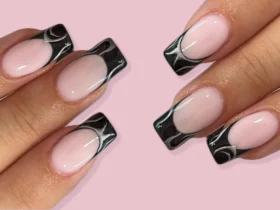The internet has given rise to many trends, both positive and negative. Among them are intriguing and somewhat controversial topics such as “The Toxic Wife” and “Malena Doll.” These two terms have gained attention in online discussions, and while they may seem unrelated at first, there are surprising connections between them. In this article, we’ll explore what exactly these terms mean, how they are used, and why it’s important to understand their cultural significance.
Who Is the Toxic Wife?
The term “toxic wife” refers to a specific type of person in a relationship who exhibits harmful, manipulative, or unhealthy behavior. A toxic wife often prioritizes her own needs over her partner’s, creates conflict, and causes emotional distress. While this concept may seem extreme, it has become increasingly common in discussions about unhealthy relationships, especially in online forums and social media.
A toxic wife can make her partner feel inadequate, constantly questioning their worth or decisions. This type of behavior often leads to long-term emotional damage and can erode trust, self-esteem, and even personal identity. Understanding this concept is essential because it can help individuals recognize early signs of toxic behavior in their relationships and take steps to address or avoid it.
Meet the Malena Doll
The Malena Doll, on the other hand, is an entirely different concept. The Malena Doll represents the idealized version of femininity—a character who is perfect, flawless, and often seen as an unattainable figure. Originally, Malena Doll was a brand associated with a particular type of fashion doll that symbolizes beauty, charm, and grace. Over time, this doll has become an internet icon, with discussions about her expanding to include broader topics about unrealistic expectations for women.
People admire the Malena Doll for her perfection, but many also critique the way she sets impossible standards for real women. Like other iconic figures in pop culture, the Malena Doll has come to represent both the allure and the danger of idealized beauty standards.
How to Recognize a Toxic Wife
Recognizing a toxic wife isn’t always easy, especially since relationships are complex and multifaceted. However, there are some common signs that can help identify toxic behavior in a spouse.

Common Behaviors of a Toxic Wife
- Manipulation: A toxic wife often tries to control her partner’s actions, decisions, or emotions. She may use guilt, threats, or passive-aggressive behavior to get her way.
- Constant Criticism: Rather than offering constructive feedback, a toxic wife may constantly belittle or criticize her partner in ways that lower their self-esteem and confidence.
- Emotional Withholding: In some cases, toxic wives withhold affection, intimacy, or communication as a form of punishment, making their partners feel rejected or unworthy.
- Jealousy and Possessiveness: This kind of wife might show extreme jealousy, even over minor interactions, and may isolate her partner from friends or family.
Why It Matters in Real Life
Understanding the concept of a toxic wife is important for both men and women. In real life, toxic behavior can destroy relationships and leave long-lasting emotional scars. In some cases, toxic wives manipulate their partners into believing that the problem lies within them, making it harder for the partner to see the truth.
Addressing toxic behavior early on can prevent significant emotional damage and help individuals either work through relationship issues or decide to leave a harmful situation. This is crucial not just for the health of the relationship but also for the mental well-being of both partners involved.
What Should You Do?
If you suspect that you’re in a relationship with a toxic wife, the first step is to recognize the behavior patterns. It’s important to confront these issues through open communication and, if necessary, seek the help of a professional counselor. In some cases, if the toxicity continues, separation may be the healthiest option. It’s vital to prioritize your mental health and emotional well-being.
Why People Love the Malena Doll
Despite the controversy surrounding unrealistic standards, many people admire the Malena Doll. She represents an ideal of perfection—flawless beauty, elegance, and grace. People are drawn to this concept because it offers an escape from the imperfections of real life. In a world where people face various pressures, the Malena Doll provides a fantasy of a perfect life, which can be appealing.
Moreover, the Malena Doll has become a symbol of aspiration for some. People admire the doll because it reflects an image of success and beauty that many desire. She is not only a toy but also an icon, representing an idealized version of the life many want to lead.
How Malena Doll Became Famous
The fame of the Malena Doll can be attributed to both her timeless appeal and her ability to evolve with changing trends. Initially, she was a popular fashion doll, beloved by children and collectors alike. As social media platforms like Instagram and TikTok grew, so did the Malena Doll’s influence. Influencers and content creators began to reference her in posts, further popularizing her image.
Additionally, the rise of discussions around body image and beauty standards in the media has thrust the Malena Doll into the spotlight. People debate whether dolls like her contribute to harmful stereotypes about women’s appearance or if they can be seen as a harmless fantasy.
Comparing the Toxic Wife and Malena Doll
On the surface, the toxic wife and Malena Doll may seem like unrelated concepts, but they both represent extreme ends of the spectrum of female behavior and appearance. One symbolizes unhealthy emotional manipulation in relationships, while the other represents an unattainable ideal of perfection.

What They Mean to People
The toxic wife and Malena Doll mean different things to different people. For some, the toxic wife represents the dark side of relationships, where emotional manipulation, control, and toxicity are all too real. For others, the Malena Doll is a symbol of escapism, an ideal that they can look up to, even if it is unattainable in real life.
Both concepts can invoke strong emotional responses, depending on personal experiences. For someone who has been in a toxic relationship, the idea of the toxic wife may bring up painful memories, while someone who aspires to perfection may find comfort in the image of the Malena Doll.
The Role of Social Media
Social media plays a significant role in amplifying these concepts. On platforms like Instagram, TikTok, and YouTube, both the Toxic Wife and Malena Doll have become part of popular discourse. The toxic wife is often discussed in terms of relationship advice or personal anecdotes, while the Malena Doll is featured in beauty tutorials, fashion posts, and lifestyle content.
Social media not only helps spread these ideas but also creates a space where people can debate their merits. Whether through memes, videos, or posts, these two figures have become a central part of many online discussions about relationships, beauty, and identity.
Should You Be Concerned About the Toxic Wife?
If you’re reading about the toxic wife and wondering whether it applies to your life, it’s important to remember that not all relationships have these characteristics. However, if you do recognize any toxic patterns, it’s essential to take action. Whether through self-reflection, therapy, or open dialogue with your partner, addressing toxicity can prevent long-term damage.
It’s always better to face these issues head-on rather than ignore them. Emotional manipulation and toxic behaviors can erode trust and happiness in a relationship over time.
Conclusion: Understanding Toxic Wives and Malena Dolls
In conclusion, both The Toxic Wife and The Malena Doll have a significant cultural impact. The toxic wife sheds light on unhealthy relationship dynamics that can be emotionally damaging, while the Malena Doll highlights the tension between admiration for perfection and the unrealistic standards that come with it. Understanding both of these concepts can help people navigate their own relationships and self-perception.
By being aware of the dangers of toxic behavior and the impact of idealized beauty standards, individuals can make more informed choices in their lives. Whether it’s recognizing toxic patterns or resisting unrealistic ideals, awareness is the first step toward a healthier mindset.
The Bottom Line
At the end of the day, it’s important to approach both the toxic wife and the Malena Doll with a balanced perspective. Relationships should be built on trust, respect, and mutual care, free from toxicity. Similarly, while the Malena Doll represents an idealized version of beauty, real-life perfection is neither achievable nor necessary. Instead, strive for genuine connections and self-acceptance.
This understanding can help people—whether they’re in relationships or admiring icons like the Malena Doll—create healthier expectations for themselves and others.








































Leave a Reply